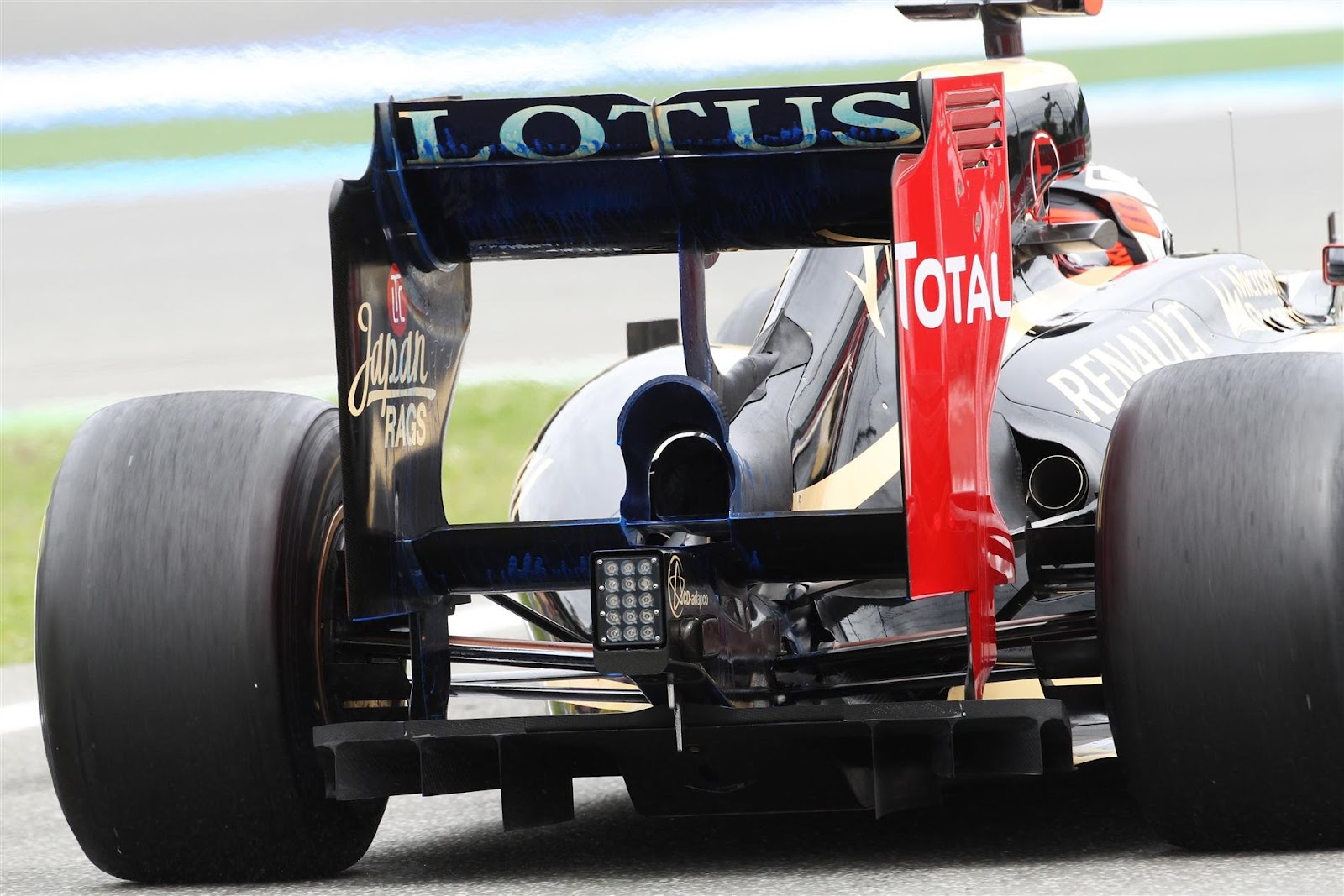1) Why does there seem to be a lack of flow in this area? Is that a sign of stagnation?
2) Note the flow around the the blade in the center of the 'wedge zone', why do they turn away from the normal axis of the on coming flow?
3) If this pattern is related to some type of F-duct system, why isn't there some flow lines similar to the rest of the wing entering the 'wedge zone' when the F-duct is not functioning (slow speeds)?
Brian
 [/quote]
[/quote]


